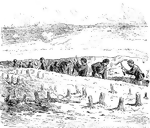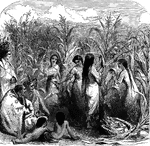
Partial Section of Typical Large American Gas Holder
A gas holder is a metallic shell which is open at the bottom (like a bell), the lower edge of which…

British Golden-rod
British Golden-rod is a member of the large composite genus Solidago, which is chiefly North American.…
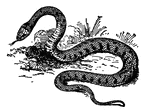
Grass Snake
Its color is olive-gray or brown above, with black bands and spots, and checkered black and white beneath.…
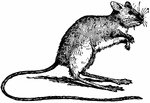
Jumping Mouse
The Jumping Mouse (Zapus hudsonius) is a N. American, jerboa-like mouse, with long hind legs, a very…
Indian Crosse Stick
This illustration shows an Indian crosse stick, as described by Gatlin. About fifty tribes of Indians…
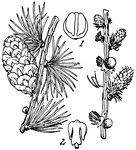
Larch, Cone and Flowers (male and female)
Larch, or Larix, is a genus of hardy, deciduous, coniferous trees of very graceful habit. They bear…

Siege of Yorktown
Battle of Yorktown. One of the major battles between the British and Americans. It took place in Virginia…

Rappahannock River
American soldiers retreating across the Rappahannock river in Northwest Virginia. It shows an example…
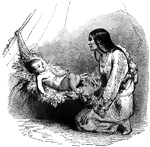
Native American Woman with Baby
A young woman in Native American attire looks over a small child resting.
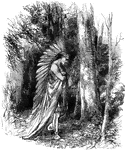
Native American with Large Headress
A male Native American with a large, feathered headdress walks through the woods.

Nathaniel Hawthorne
A Portrait of Nathaniel Hawthorne (1804-1864). Hawthorne was an American novelist best known for The…

Church of the Val-de-Grâce
The Church of the Val-de-Grâce is the church of a former royal abbey in the 5th arrondissement of Paris,…

Puma
The puma, also known as the cougar, panther, or mountain lion (Felis concolor) , is a large American…
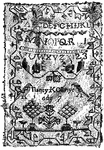
American Sampler
A piece of embroidery or needlework produced as a demonstration or test of skill. This sampler includes…
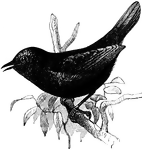
Magellanic Tapaculo
Scytalopus magellanicus. "A genus of South American formicarioid passerine birds, of the family Pteroptochidae.…

Collection of Sewer Cross-Sections
"A conduit or canal constructed, especially in a town or city, to carry off superfluous, water, soil,…

Nightjar Profile and Tubular Nostrils
Siphonorhis americana. "A genus of American Caprimulgidae or goatsuckers, having tubular nostrils. The…
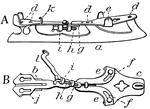
American Club Ice Skate - View from Side and Bottom
"A, side view of American club-skate; B, bottom of the skate with the runner removed. a, runner; b,…
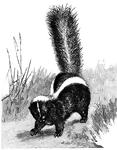
Common Skunk
"A fetid animal of the American genus Mephitis, M. mephitica... The animal inhabits all of temperate…
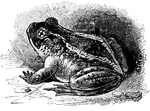
Spadefoot Toad
Scaphiopus holbrooki. Illustration of the American spadefoot toad, native to Canada, the United States,…
White Marlin, a Sailfish
Tetrapturus albidus. Also called a billfish or spearfish, "the dorsal fin is low or moderately developed,…

Spectacled Bear
Tremarctos ornatus. "The only South American bear, having a light-colored mark on the face, like a pair…
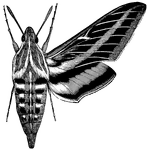
White-Lined Morning Sphinx
Deilephila lineata"...a common American moth of striking coloration, whose larva feeds on purslane."…

White-Lined Morning Sphinx
Deilephila lineata"...a common American moth of striking coloration, whose larva feeds on purslane."…
